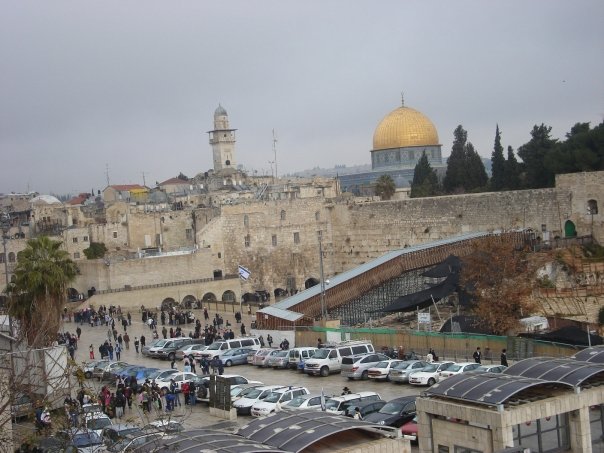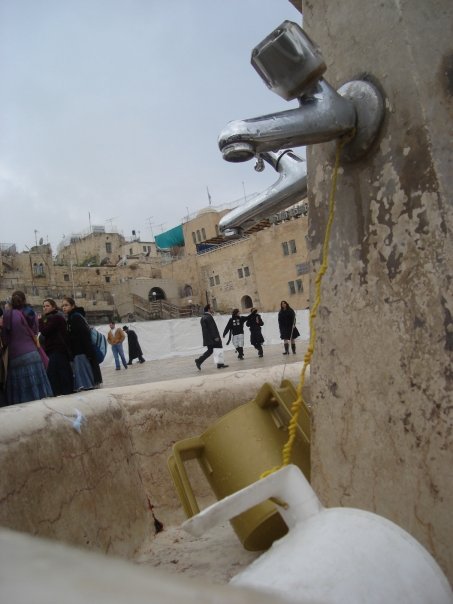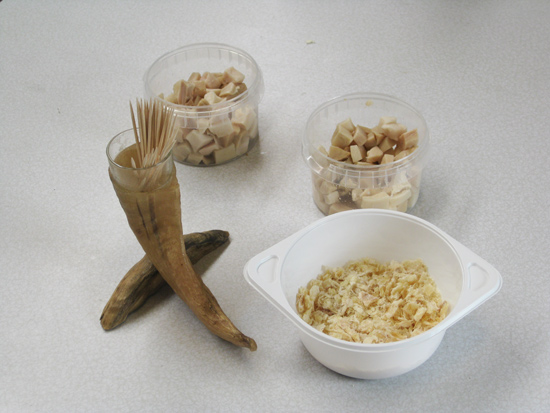
Undulating, moss-covered lava fields and grey skies surrounded me on the drive from Keflavik Airport to downtown Reykjavík, dubbed “101” or “the 101” by local hipsters. Speeding eastward along Route 41, I could see Faxaflói Bay spread out on my left and on my right; off in the far distance, sat the remnants of the former United States Air Force base. The surrounding landscape has been favorably compared to the surface of the moon, although I could not imagine the lunar surface looking so inviting. Navigating through the narrow streets of Reykjavík proved easier than I had anticipated, and after locating my small hotel on the western edge of the city, I checked in, refreshed myself, then left on foot for Laugavegur, Reykjavík’s commercial nerve center. It was barely eight in the morning.
Until its economy imploded in the early weeks of October 2008, Iceland had been for me, as it was for many of my contemporaries, best known as the home of a famous chess match, a U.S.-USSR summit that didn’t go so well in the 1980s, and a few quirky musicians. So it was a shock to discover that not only had the global financial tsunami lapped at the shores of remote, mysterious Iceland, but that the whole thing had nearly gone down in the span of a weekend. Who knew Iceland had such weapons of financial mass destruction? And who knew that it would end up turning these on itself?
Nearly a year after Iceland had almost fallen apart, I decided to visit Reykjavík to see for myself how Icelanders were faring. For the natives, rebuilding meant painful economic restructuring conducted under the glare of the international spotlight — and the attention was not always welcome nor, for that matter, kind. To me, Iceland’s collapse evoked pity and fear, as in it I saw reflected the fearful outcomes that might have struck my own fortunes had the U.S. economy not been so robustly buttressed.
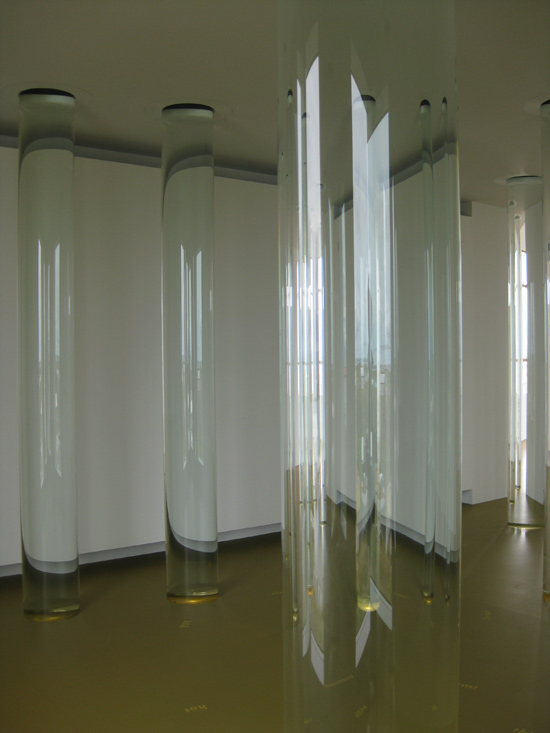
A journey to Iceland, therefore, would be a touristic form of catharsis, an attempt to purge the unease of living in an economically unsafe world with a reassurance that if the Icelanders could keep themselves afloat, then there was hope for the rest of us. Call it a “recession vacation” or “vulture tourism”; either way, I wanted a front-row seat to one of the preeminent stories of the young millennium: a Western European democracy attempting to recover from total financial apocalypse and save itself from becoming the go-to punch line for the Great Global Financial Crisis of 2008.
The lay of the land
That first morning, I strolled through Austurvöllur, the public square facing the parliament building and the site of frequent protests, though on this morning the only signs of discontent were a row of placards planted along the edge of the sidewalk. No one else was around at the time, suggesting that whichever protest these signs had garnished had either taken a recess or was in preparation mode for later in the day. Though they were written in Icelandic, the boldface type, exclamation points, and earnest handwriting implied a manifest objection to the current state of affairs — though it seemed the height of Icelandic politeness that these signs, clearly left overnight, had stood at the edge of the square unmolested. Although it was only a few weeks past midsummer day, I felt the need to bundle up under fleece and winter coat, and thought perhaps I was being overcautious by allowing the “ice” in Iceland to convince me I had walked into a nation-size refrigerator.
In good time I navigated my way to Bankastraeti, and, as I had anticipated, the banks of Bankastraeti had been emptied — both literally and figuratively. The ghosts of decimated balanced sheets and lost savings accounts of nationals and foreigners were eerily called to mind by the residue of signage that had been haphazardly removed yet still lingered in faint sun-bleached traces on walls and windows. If trauma can be said to leave traces of heightened emotion in the places where such tragedies occurred, then Bankastraeti oozed the psychic residue of intense suffering and made me shudder. It felt unclean and unsafe.
After a short distance, Bankastraeti morphed into Laugavegur. The cityscape, such as it was, rose gently up a hill, but upon reaching the main drag, I found Laugavegur and its side streets littered with broken bottles, garbage, and puddles of multicolored liquid drying in the cool morning, as if a cyclone had ripped through the world’s largest liquor and vomit store and dumped the refuse across central Reykjavík. More ominous, however, were the shop windows. Although it was clear that the stores and boutiques were in business, filled with merchandise and accepting all major credit cards, almost every one of them had displayed somewhere on the glass the word útsala. Sale. Clothes, souvenirs, sunglasses, books, bicycles, even Dolce & Gabbana were discounted at 50 percent, 60 percent, 70 percent off. Deserted art galleries were another common feature, most of them depressingly emptied and abandoned, while others, barely operational, had unpurchased wares clearly visible through somber windows.

In the mercantile mise-en-scène of Lagevular, I could perceive a palimpsest of Iceland’s mercurial rise and fall. The functional if not entirely imaginative architecture of the row of shops betrayed a recent past life as a thriving yet quaint high street. Then, when the good times and good money rolled in, these storefronts were swiftly appropriated for high fashion, big-ticket luxury consumer goods, piled Gucci-high and Prada-deep. Yet with all these trappings, it was still easy to determine that these establishments had not been originally fashioned for fashion; the interiors were too plain, too dull. What I observed that morning was the third and saddest phase: the fire-sale panic of desperation, útsala signs superscripted over these august labels like diacritical marks of economic depression.
To get a better look at the city, I made my way up to the majestic Hallgrimskirkja, the Lutheran church that commanded an impressive view over all of Reykjavík. Its massive front, built to resemble pillars of columnar basalt, was unfortunately obscured by scaffolding, providing an unflattering backdrop for the majestic statue of Leif Erikson perched out front. Seen from the top of Hallgrimskirkja, Reykjavík in the Saturday morning sun lacked the gravitas one would naturally expect from a world capital. Suspended, as it were, both geologically and symbolically betwixt America and Europe, it lacked both the Old World weltanschauung of London or Paris and the New World, nouveau riche glitz of New York City. It was clear, however, that from its most recent financial gambit, Iceland was struggling to become a significant something — if not a mirror of its peers, then a distinctive North Atlantic equivalent — and this desire for that distinctive something-ness could be seen in the manic architectural eruptions on its fringes, mainly in the suburbs and along the waterfront in the form of glass and steel monoliths and Scandinavian-inspired high-rises.
Yet a collateral benefit of Iceland’s quest for something-ness has been Reykjavík’s transformation into a multicultural metropolis. With a population of nearly 120,000 (over 200,000 with suburbs included), greater Reykjavík accounts for nearly two-thirds of Iceland’s population of 320,000, 7.4 percent of which are foreign citizens. The majority of these are Central and Eastern Europeans. However, a substantial portion of this figure is made up of Africans and Asians. Up until the crisis hit, Iceland’s surging economy had necessitated the rapid importation of mass labor, mostly for the construction and service sectors. In 2000, the foreign population of Iceland numbered only 7,271, mostly in Reykjavík. By 2007, however, the boom was heating up, and 18,563 foreigners were living and working in Iceland. By the end of 2008, the year the banks crashed and the economy soured, the immigrant population stood at 23,421.
In absolute terms, 23,421 might not seem so significant. For Reykjavík, however, the sudden introduction of outsiders was not so much culture shock as culture electrocution. This sudden, rapid influx of foreigners propelled suburban expansion in Reykjavík (“do not shoplift” signs around the city are written in six languages, including Polish and Vietnamese). It also led to a serendipitous collateral industry: foreign restaurants. Indian, Chinese, Mexican, Italian, and even Nepalese restaurants dot the city and draw brisk business.
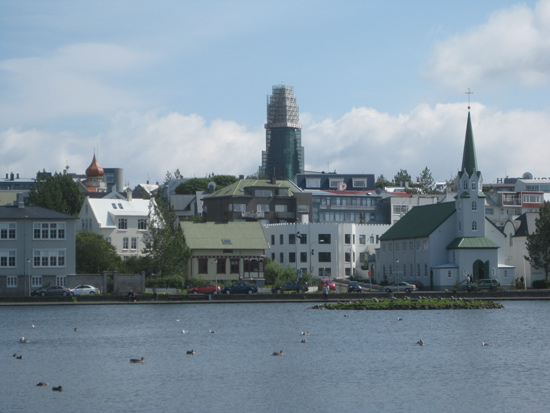
Saturday night runtur
Upon leaving Hallgrimskirkja, I heard a low rumbling accompanied by a loud hiss and the sound of breaking glass coming from below. I scrambled around a corner only to be nearly run over by a convoy of massive street-sweeping trucks. These large, cubical creatures slowly grazed on the filth lining the roads, scrubbing away the glass, trash, and puke with gigantic rotating brushes and sprays of pressurized water. In mere minutes, all traces of the mess were gone, and the beasts lumbered on to filthier pastures. Standing in the midst of what had only moments before been a trash heap, I was astounded that such chaos could be so smoothly transformed into order.
The disarray I had witnessed was not in fact the result of Iceland’s transformation into a dystopian trash heap, but rather the leftovers from the previous night’s runtur, the world’s most amicable kegger. On Friday and Saturday nights, a drinking ritual is reenacted, where Icelanders shed their northerly reticence, drive in circles, and — especially in the case of Reykjavíkians — drink themselves into a state of friendliness. Whether on the streets or in the bars, when Icelanders get excessively drunk, they don’t get mean; they get nice.
Eager to join in the festivities, I spent the rest of the day in low-energy pursuits, mainly museums and people-watching. Austurvöllur was crowded with locals and tourists, and the only indicator of disquiet was a lone protester standing in front of the parliament building. Surrounded by his poster and banging a gong, the white-haired man spent the afternoon howling invectives into a megaphone. Meanwhile, nearby throngs of Icelanders relaxed, sunbathed, and took advantage of the free Wi-Fi in the square, hardly noticing the man with the gong.
Later that night, I engaged Icelandic culture on its own alcohol-fueled terms. Returning to Laugavegur, I found the streets transformed into a spontaneous celebration and packed with revelers. Well-dressed adolescents with Hoxton fins and popped collars comingled with larger, older, more tastefully clad folk walking, driving, staggering, and occasionally singing their way across the city. I found myself greeted and smiled at by random strangers, tipsy teens apologized sincerely for accidentally bumping into me, and scores of 20-somethings honked and waved at me from their cars. The streets, especially Laugavegur, were choked with cars which were in turn choked with smiling occupants. Revelry, merriment, and politeness were in fluid abundance under the fuchsia glow of a sun that refused to dip too far below the horizon. If there were any harsh financial difficulties being suffered by those present, I could sense none of it amongst the runtur revelers that night, at least as long as the beer and brennavin (the local caraway-flavored schnapps) flowed, nor did it seem appropriate that night to spoil everyone’s pleasure by asking about unpleasant topics.
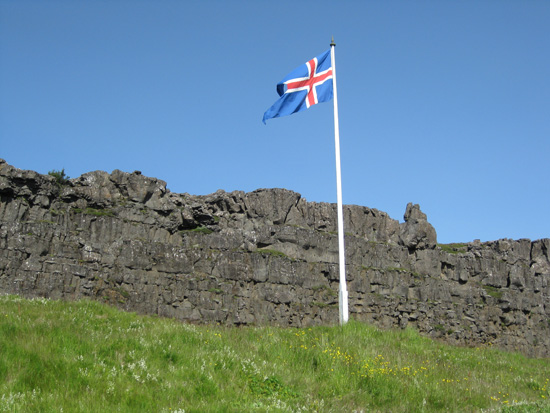
Instead, I literally went with the flow, in this case the flow of people, cars, and drink, which swept me down Laugavegur, up Hverfisgötu, and all through the backstreets and alleys, from bar to bar and club to club. I philosophized with strangers (in English, of course) and at one point observed two rowdy drunks being counseled to calm down by the police — and their complying without complaint. As I sat in the back of a gay bar at 4:00 a.m., umpteenth drink in hand, rockabilly band playing American hits, and women in scarves and poodle skirts dancing the night away, I was overwhelmed with an inexplicable sense of optimism.
As the hours passed and the midnight sun gave the sky a rose-tinted hue (although this could have easily been the effect of my bloodshot eyes), the litter accumulated, glass bottles were broken on sidewalks and in gutters, and puddles of puke blossomed anew on the pavement like wildflowers after an 80-proof rainstorm. This time, however, I wasn’t so worried as I was earlier that day. Perhaps it was too much of a leap to see in the runtur a metaphor of Iceland’s attitude about weathering its own grim economic forecast. That is, despite the hardships of the present, maybe all the driving in circles, drinking, and wild abandon would eventually get fixed somehow and by someone else, preferably whilst everyone was asleep. Then again, maybe this time the hangover of financial runtur might not be so easily sprayed clean by the even-handed application of state resources as Reykjavík’s streets were every weekend morning. Still, it was a comforting thought, as I made my way in the general direction of my hotel, that someone else was going to clean up this mess.
When financial hardship is not enough, add humiliation
The facts of Iceland’s economic collapse, like Sunday morning in Reykjavík, are startlingly bright, hard to ignore, and well known to everyone. The triumvirate — some would say the bankocracy — of Landsbanki, Glitnir, and Kauphthing banks had gambled big and lost bigger, the ratio of debt to the gross domestic product (GDP) being the neighborhood of around €50 billion to €8.5 billion. The nationalization of these institutions set off a chain of events resulting in austerity measures, political unrest, gallows humor, and the mass spontaneous combustions of Land Rovers by owners who preferred to destroy their vehicles and collect the insurance rather than be forced to pay them off. Unemployment, which had been 1 percent in 2007, had risen to 9.1 percent by February 2009 before settling to 7.2 percent the following October. The GDP sank 3.3 percent in the first three quarters of 2009.

And then there were the humiliations. As a price for breaching global financial decorum and actually falling apart, Iceland would suffer the shame of the public stockade. U.K. Chancellor of the Exchequer Alistair Darling famously invoked an antiterrorism law in order to protect the funds of British citizens who had deposited money in Iceland banks. At the news that the International Money Fund (IMF) had agreed to provide funds to stabilize the Icelandic economy, a mob of angry protesters assembled in front of the Althing, Iceland’s parliament building, demanding Prime Minister Geir Haarde’s resignation. President Olafur Ragnar Grimsson created a mild diplomatic stir when, in an attempt at self-effacing obsequiousness, he offered the Russians use of the abandoned U.S. airbase at Keflavik, apparently in exchange for a helper loan. (The offer was politely declined.) Michael Lewis, writing for Vanity Fair, added to the feast-of-fools atmosphere by describing in comic-horror vignettes the testosterone-juiced ineptitude underpinning the risky financial machinations of Iceland’s banks, while Icelanders were portrayed as chauvinist, sexist, and entirely inept xenophobes.
Iceland as financial terrorist. Iceland as fourth-world country. Iceland as Russia’s toady. Iceland as a financial idiot playing with nuclear weapons and getting radiation burns. To these one might add one more characterization that surfaced in the press just as Iceland was well under water: the ever-so-embarrassing detail that a majority of Icelanders reportedly “[did not] deny the existence of elves”and that consequently major construction projects had to wait for certification that no elves would be harmed. Iceland as elf-believers. It seemed that — in the case of Iceland’s recent historical catastrophe, anyway — the first time for Iceland was both tragedy and farce.
These were not appealing narratives, particularly for a country that had been, until recently, the poster child for the transformative power of bold financial risk-taking. A nation of speculator-spenders, buoyed by yen swaps and ebullient optimism, had seen its worldwide profile rise so precipitously that when the end came as spectacularly as it did, there was nowhere to hide from the shame of it all — the end came on too fast. The Reykjavík daily newspaper, Morgunblađiđ, reported that 50 percent of Icelanders aged 18 to 24 were considering leaving for good, no doubt to avoid the shame of living in a state with such clumsy bankers and politicians.
The “Library of Water”: the cure for tourist guilt
There was one other form of humiliation laid over the bad figures and the bad press afflicting Iceland: a spike in tourism, the ironic upside of having one’s currency devalued so viciously. Tourist shilling is a special form of humiliation, one that compresses economic necessity and local hospitality customs with the need to “perform” one’s self and one’s identity for the entertainment and edification of eager outsiders. Tourism certainly brings in the foreign capital, but at times the cost to one’s self-esteem can be as devastating as the financial meltdown itself, and in Iceland’s case, the 2009 tourism numbers sped upward almost as soon as news of the country’s collapse in October 2008, whereas Europe’s tourism industry declined across the board. It seemed that many like me had targeted Iceland for a recession vacation of their own.

Thus, over the next few days, I gingerly set forth to look for signs of economic recovery in ways I hoped would inflict the least embarrassment both for them and for me — call it tourist guilt. Unfortunately for my guilty conscience, my first stop turned out to be the most well-trodden of tourist haunts — the Golden Circle. Hovering over Reykjavík like a halo of geological wonders, the Golden Circle comprises an impressive array of natural and historical sites: the _ingvellir, the site of Iceland’s ancient parliament, founded in 930 A.D.; Gullfoss, a spectacular waterfall; and the Haukadalur Valley, home of Geysir, from which all geysers are named. The route took us past volcano craters both dormant and extinct, mirror-smooth lakes bursting with char, and a vast geological rupture that ran like a long, thin valley for miles. It was the Mid-Atlantic Ridge exposed to plain air, the meeting point of the American and European plates.
Over the next few days I spread out and covered more ground, the pangs of tourist guilt gently subsiding under the spell of Iceland’s brooding panoramas. I hitched a ride to Nesjavellir to see a geothermal plant, and later that day I caught a bus to Skógar and hiked up a segment of Sólheimajökull, an easily accessible arm of the Mýrdalsjökull glacier. Decked out with crampons and an ice ax, and avoiding crevasses and sinkholes, I made my way up several kilometers of aquamarine ice bespeckled with the ash and pebbles of a century-old eruption. Underneath the ice cap lurked Katla, a volcano that had last exploded in 1918 and whose threatened reawakening was a constant source of gossip and fearful speculation for the locals.
Along the way and at every stop, contrary to what I had heard about Icelanders’ legendary reticence, the locals I met and interacted with seemed willing enough to opine on the landscape, geology, local mythology, and crisis facing their country. The common refrains I heard were variations of familiar bromides about waiting things out and hoping for the best. Their responses brought to mind a house I saw near a mountainside on the trip back from the Golden Circle, a small, bright green summer cottage that happened to be completely surrounded by boulders the size of baby brontosauruses. Having been built so near a mountain ridge on an island prone to earthquakes, the builder was just asking for trouble; and yet when the big one hit, the house was miraculous spared. There was bold fatalism in that house, similar to the shrug that I saw Icelanders interject as they reflected on their economic travails.
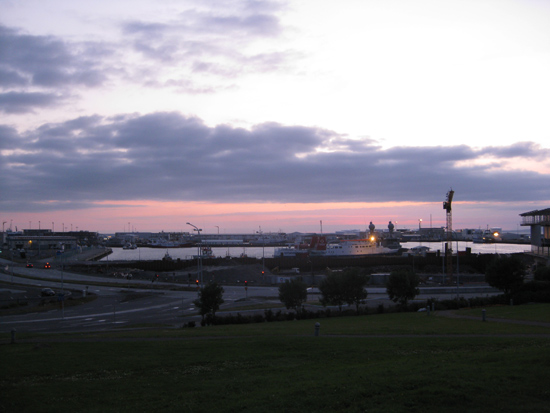
On my last extended day trip, I met the chattiest Icelander, Magnús. I was set on visiting the seaside town of Stykkishólmer, resting on the southern edge of the Breiðafjörður fjord on Iceland’s west coast and apparently home to the best runtur in Iceland. My intention was to pay a visit to a particular art installation titled “Vatnasafn” (“Library of Water”) by the American artist Roni Horn, which consisted of water samples taken from various natural sources — mostly glaciers — from across Iceland and placed into tall, clear, pillar-like cylinders.
Magnús, my driver, spoke without ceasing, digressing with authority on biology, geology, architecture, and Icelandic history and mythology. He expounded on the sagas and showed me a path allegedly worn into the solid lava of Berserkjahraun by two feuding Vikings. At another point he stopped the car and asked me to listen to the landscape with him. Though it was an odd request, especially coming from someone who spoke so much, I indulged him, and for a few choice minutes together we stood at the side of the road, the sound of wind rushing down steep hillsides.
Back in the car he asked, “Would you like to try hákarl?”
For the uninitiated, hákarl is the preserved flesh of Greenland shark, famous for its nauseating smell and taste which reportedly once made Gordon Ramsay throw up. Catching Greenland shark the traditional way involves hooking it, wrestling it into your sailing vessel, then severing its spine below the skull while avoiding having your own spine snapped by its hideous jaws. Since the flesh is saturated with uric acid (the better to survive cold North Atlantic waters), Greenland shark meat is sliced into large sections, buried for several weeks, then hung to dry — or, if you prefer, rot — for many months afterward. The resulting product is a spongy meat the color of alabaster, usually cut in cubes, reeking of violent death. I was game.
After reaching Bjarnahöfn, an out-of-the-way farm at the end of a long, unpaved driveway, I found ways to delay the inevitable tasting that would surely cause me intestinal distress: I admired the horses, breathed the fresh air, and speculated on the unusual tools I saw hanging on the wall outside one of the buildings. A few meters away I saw a trailer with a blue tarp, its edges held down by ropes. I observed a child approach the tarp and lift one of its corners, revealing the sliced corpse of a recently caught shark. The proprietor of the farm was a longtime hákarl maker from a long line of hákarl makers, although on that day he was away, so Magnús introduced me to the hákarl maker’s grandson, who proudly showed off a collection of hooks and curio memorabilia arranged in a makeshift museum. Weird stuffed animals stood sentinel over ancient fishhooks and yellowed photographs of unsmiling fishermen. A well-preserved fishing boat was propped up on one side of the museum-shed, surrounded by desiccated shark faces and other seafaring accoutrements.
Set out on a table, unassuming yet foreboding, was a container of hákarl, with no alcohol chaser within easy reach. Even from a distance the smell was overpowering, and I hesitated before impulsively taking the plunge, spearing a piece with a toothpick and popping it in my mouth. My strategy was to chew and swallow quickly, then run for the door to projectile vomit — it would be over in seconds. Surprisingly, I was not overcome, neither by fumes nor flavor. As I chewed warily, the aroma, texture, and mouthfeel reminded me of the kinds of dried fish I used to eat in Hawaii where I grew up, minus the queasy formaldehyde-like after burn, though when offered I gently refused a second taste. That I had bested Gordon Ramsay just once was enough of a victory for me.
Shortly thereafter we headed on to Stykkishólmer, Magnús’s hometown. I was dropped off near the harbor with instructions on when I’d be retrieved. Breiðafjörður, the bay upon which Stykkishólmer sits, contains thousands of islands of varying size and a diverse array of birds and sea life, and I would have been remiss not to go out for at least a few hours and explore. I caught a tour boat that took me around some of Breiðafjörður’s major islands, remote and forbidding, crammed with puffins, guillemots, gulls, and even an eagle. The islands were unruly masses of columnar basalt rising vertically (and sometimes horizontally) out of the depths of the sea so steeply that the boat could sidle within arm’s reach of a cliff without threat of running aground. The stone looked like so much rebar gathered, twisted and misshapen with scant tufts of greenery tossed in to enhance the island effect. I could understand the impulse to design Hallgrimskirkja after these formations, as the islands themselves exuded a cathedral-like solemnity (minus Hallgrimskirkja’s fascistic undertones). The empty homes of especially brave farmers were planted on select islets scattered in the bay, and I noted the sheep grazing away, oblivious to us and their precarious isolation.
Back at Stykkishólmer, I hiked up the tallest hill to get a view of the harbor and environs and to visit the former town library, which had been altered to be the home of Roni Horn’s “Vatnasafn.” As I walked in, I was invited to put surgical booties over my shoes so as not to disturb the rubber flooring laid down as part of the installation. I found the columns of water scattered throughout the open rooms, and on the floor were words, mostly in English, expressing different moods: happy, sad, indifferent. As the light shifted during the course of the day, different moods would be emphasized by the refracted light of the water. From one of the large bay windows I could see a fancifully designed white church made out of stylish, modernist gestures (I later learned that Magnús had taken part in its construction, although he was not a churchgoing man himself). In another I saw a two chairs and a table with a half-played chess game. It was quiet, sunny, and warm inside the artwork, a welcome respite from the cool summer air outside, and yet I wondered, as I left, what had happened to the real library that “Vatnasafn” had replaced.
On the drive back to Reykjavík, I drew up the courage to ask Magnús about his views of the economic distress. He knew things were bad, but living in Stykkishólmer, so far from the center of things, was both insulating and isolating, and he seemed content to let things work themselves out. As we drove through landscape dotted with volcano cones and craters, he mentioned the 1973 Eldfell eruption on the island of Heimaey. Faced with the loss of the harbor so crucial to the island’s economic survival, Iceland engineered a heroic rescue operation that involved pumping millions of gallons of seawater onto the advancing lava, cooling and diverting it. Despite the substantial destruction of property and a mass evacuation, the herculean effort succeeded in holding back the lava, and Heimaey was saved. And as if to add triumph upon triumph, the islanders managed to generate electricity and hot water from the residual volcanic heat and resurface the tiny local airport with the volcanic fallout.
Perhaps this is how Icelanders saw themselves and their relationship to the crisis looming before them. Hovering in the nether realms of the national sub-conscience, the Eldfell response showed how Icelanders could save property, prevent mass emigration, and turn destructive heat into productive energy through persistence, engineering, and a bit of luck. It was a tempting thesis, and I tried it out on Magnús. He shrugged the summer-cottage-in-the-boulder-field shrug.
The whales of July
On my final afternoon in Iceland I went whale-watching in Faxaflói Bay. As we chugged out of the harbor, I could see stark reminders of the building boom gone bust: half-built or empty buildings lining the shore. A sliver of an office tower, clad in floor-to-ceiling glass windows, stood imposing but hollow.
Although the puffins were unaccommodating that afternoon, the whales were abundant, and an especially frisky humpback emerged from the deep and whipped the tourists into a photo-taking frenzy. It spouted, flipped its tail several times, and approached so close to the boat that I could smell its fishy breath whenever it exhaled. Several minke whales later joined in.
On the return trip I befriended two women, an Icelander named Johanna and her co-worker, a Chinese exchange student. Both attended university and were taking the day off from their part-time hotel jobs. We spoke generally about the whales and the lack of puffins, then later compared digital pictures of the sea life.
I delicately brought up the subject of the economic crisis.
“It was crazy,” she began. “Too much money and not enough workers. Every high school student had a full-time job. Every day they would come home from classes and then start working.”
She said that even before the crisis it was the Icelandic way to graduate: incur debt buying homes and other luxuries, then spend a lifetime paying it all off. Generous government housing subsidies had set the stage for the madness that followed, and more easily available credit accelerated home-building and housing speculation ad absurdum. I asked her if she had felt the same compulsion to borrow and spend as her peers had, but she claimed she hadn’t.
“We’re probably going to join the EU,” she said with a sigh as we clung to the observation deck bars. “Things will probably get worse before they get better. But I’m not worried.”
“So you’re optimistic,” I suggested.
“Oh God, no,” she replied. “I’m moving to Vienna to live with my boyfriend. There aren’t any jobs here.”
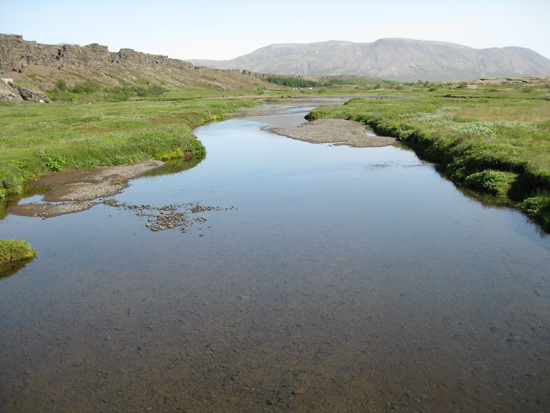
Kekoa C Kaluhiokalani
Dear Reader,
In The Fray is a nonprofit staffed by volunteers. If you liked this piece, could you
please donate $10? If you want to help, you can also:



